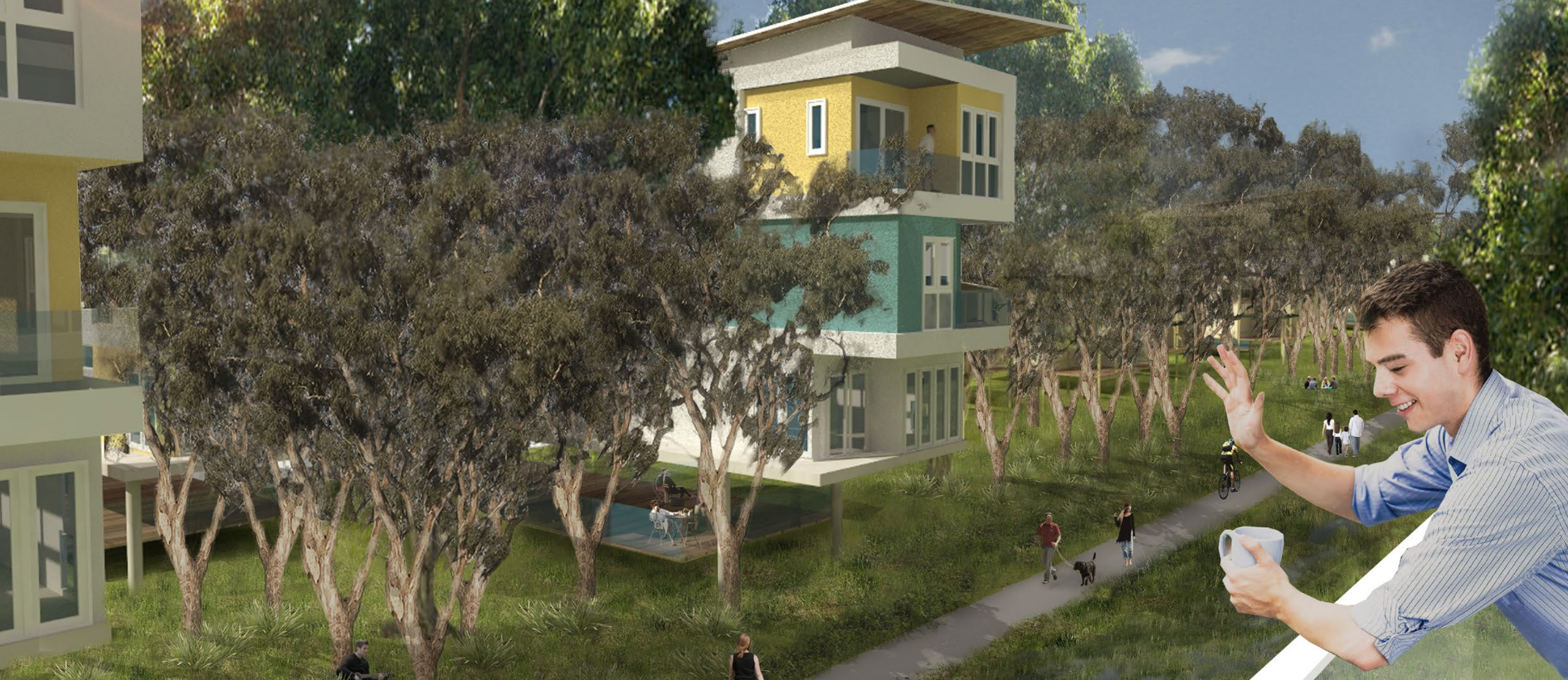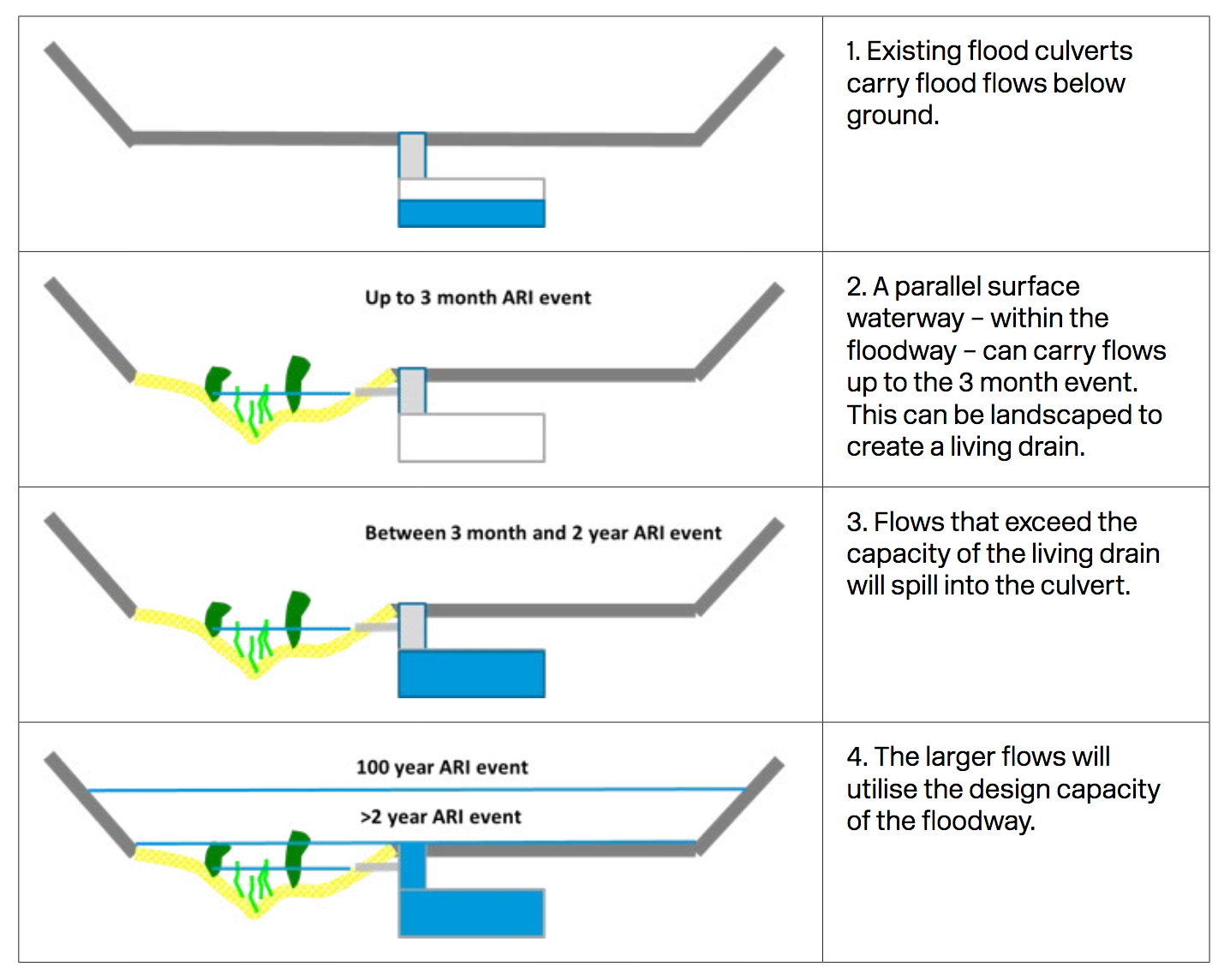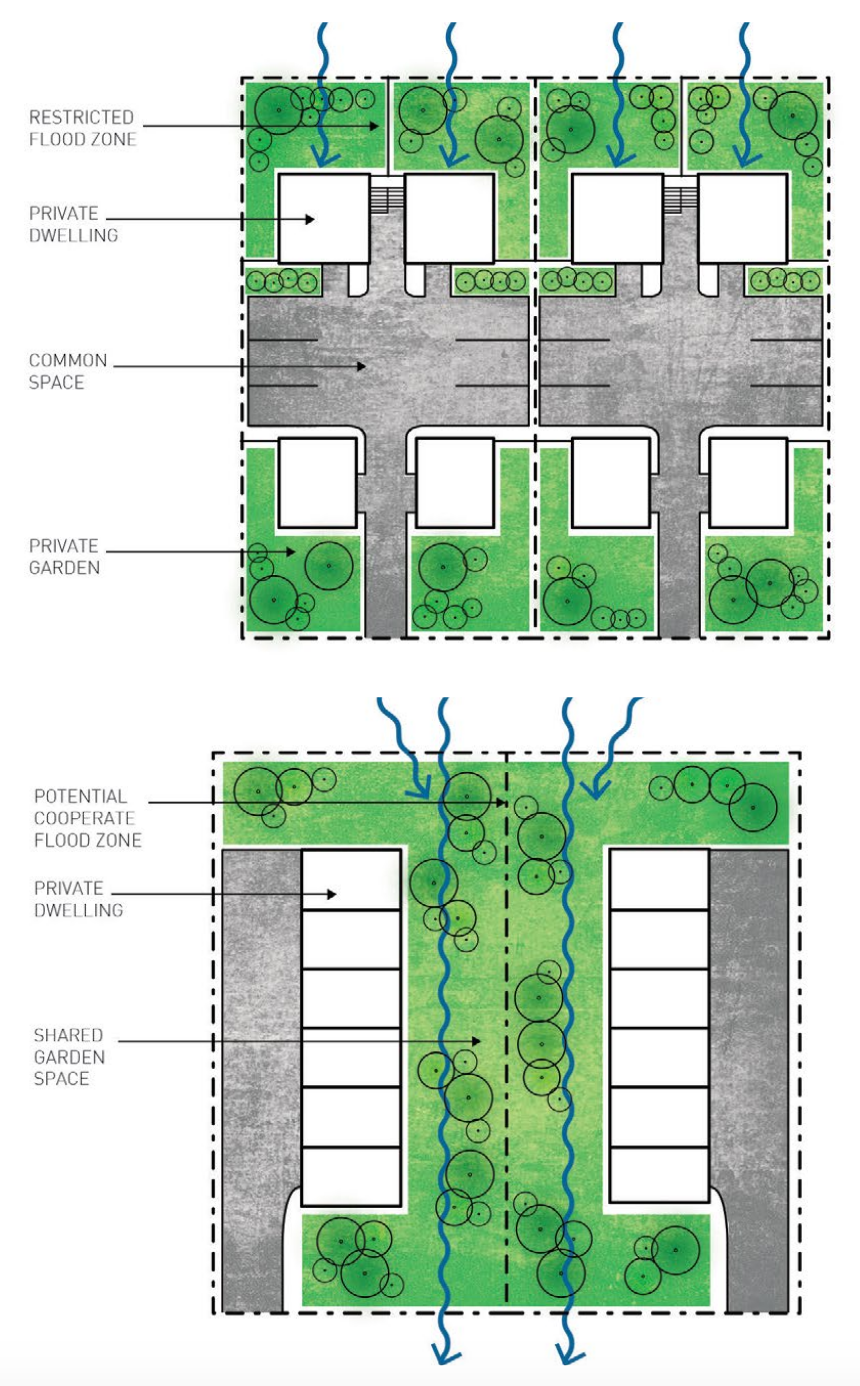A new report suggests some innovative solutions to flooding in Brisbane

How might we build flood literacy and a flood resilient community in the Norman Creek catchment, a heavily urbanised area in Brisbane’s south that’s prone to overland flooding? At the same time as reducing flood risk, can we also improve liveability, enhance biodiversity and improve water security? And, how can we operationalise our ideas and help Brisbane City Council to deliver them?
These are some of the design challenges addressed in Solutions for Norman Creek, a report that compiles ideas generated during a research synthesis workshop in August 2016. The CRCWSC worked with Brisbane City Council and other stakeholders (Queensland Urban Utilities, Seqwater, Healthy Land and Water, GHD, E2 Design Lab and the International WaterCentre) to develop solutions that make Brisbane a city that ‘lives well with flooding’.
The report presents and explains seven ideas to address overland flooding in both public and private spaces:
Adventure corridors—involve retrofitting (or protecting existing) green corridors, using new development typologies that create linear, connected green corridors that function as stormwater channels. But, when not channelling, infiltrating and detaining stormwater, they can also support active transport, recreation and amenity.
Belt of backyards—uses backyards as a network of spaces for managing overland flows. Specifically, households could be encouraged to plant trees and other vegetation that slows the flow of overland water through the community.
Living drains—involve creating surface drains by exposing existing drainage culverts, to mimic ephemeral, natural creeks. These living drains would capture smaller flows and direct larger flows to existing culverts.

Activated floodways—use existing floodways as open spaces, by linking them with the surrounding streetscapes.
Six pack typology—creates corridors and flow paths around medium density developments, to mitigate the loss of private open space and overland flow pathways that often occurs when low density housing is replaced with medium density development.

Smart rainwater tanks—use technology to act as both water supply and flood mitigation infrastructure. For example, tanks receive forecasts and drain in anticipation of a storm event.
Water sensitive streets—incorporate appropriate nature-based stormwater treatment infrastructure, such as raingardens.
Workshop participants also proposed a new investment framework, which encourages investment in the catchment and community—that is, a framework that encourages projects that deliver multiple objectives (such as improving liveability and amenity), not just address flooding.
“Norman Creek gives us an opportunity to prototype new flood management approaches that manage rainfall runoff close to its source”, said Jamie Ewert, National Engagement Manager at the CRC for Water Sensitive Cities. “If introduced, the resulting mosaic of localised solutions will retain and infiltrate rainfall locally, provide safe passage for overland flows that do eventuate, and provide a consistent response across public and private spaces.”